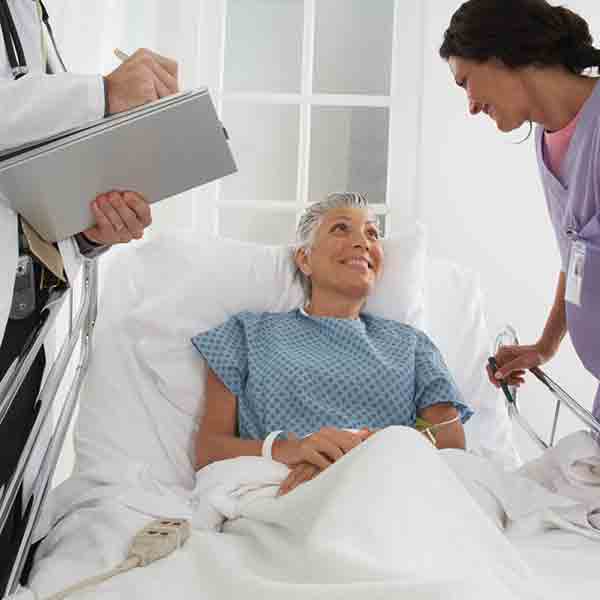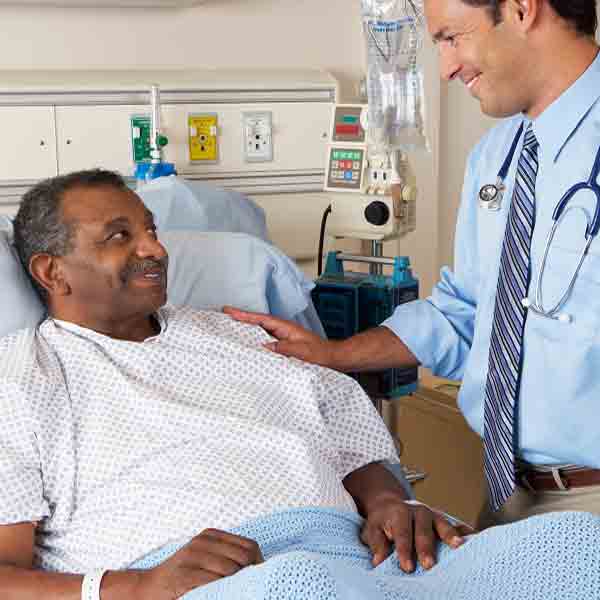Effective Bedside Teaching: Avoiding the Rise of a New “Lost Art”

Fellows and faculty members face increasingly complex patient panels in both inpatient and outpatient settings as medical comorbidities increase and treatment options continue to develop. Physicians are increasingly working against the clock due to the demands of documentation and the logistical overhead of patient throughput in our health care system.
This — in combination with the availability of a large amount of diagnostic imaging and laboratory data — and appropriate but firm boundaries set forth by the Accreditation Council for Graduate Medical Education can lead to decreased opportunity for the provider-patient interface with subsequent reduction in potential learning opportunities.
Most commonly, this manifests as less dedicated teaching at the patient’s bedside in favor of quickly accomplishing logistically mandated activities either in clinic or on the wards.
Efficiency in the clinic and on inpatient rounds is vital for the well-being of trainers and trainees alike; however, this should not overshadow the importance of learning from a vital team member: the patient. Cardiovascular specialty education lends itself well to many bedside teaching opportunities, particularly with the history and physical exam.
Factors that contribute to successful bedside teaching:
- Get the setting and timing right. Teaching is most effective when learners are not faced with simultaneously competing priorities. For example, if a team has a particularly busy morning and rounds are running later than expected, fellows and residents will likely not glean the intended points. The location component of teaching matters too, as teaching at a patient’s bedside is more effective when there is physical space for all learners to interact with the teacher and the patient.
- Focus on one achievable task. When choosing what to concentrate the learning objective on, it is important to adhere to the golden rule of keeping it simple. Learners will do best when the goal is clear and attainable.
- Ask for permission from patients and introduce them to all learners in the room. Before any teaching begins, whether it is about how to take a history on exacerbating factors of chest pain or how to do an accurate volume assessment on physical exam, ensure patients are on board with you using them as a teaching resource. Hospitalized patients are not desensitized to the medical environment in which we operate daily.
For many, their current experience puts them in a state of unfamiliarity and thus vulnerability. One way to invite them to participate in their own care is to make sure that all team members have been adequately introduced to the patient, even going to the point of making sure the patient hears each person’s voice. This provides both an explanation for their presence and demystifies the group of strangers wearing white coats surrounding their bedside.
As one could imagine, this inherently makes patients feel more like members of their health care team and more willing to participate actively in learning about their disease process as teaching commences. - Involve patients in learning about their own physical exam findings. After an appropriate teaching setting has been established (with introductions plus permission), be sure to include patients in learning about their own history and physical exam findings.
Often times, we do this by giving patients our recommendations after obtaining a history of present illness. However, making the connection from why something was asked to what it means is often not explained to patients the way we go into detail with physician learners. For appropriate patients, this can be a very effective way to establish rapport while simultaneously conducting bedside teaching.
For physical exam maneuvers, keeping the patient involved as you would with fellows, residents and students maintains engagement. For most patients, this entails translating physical exam findings without medical jargon. - Make the results tangible to learners using physiologic explanations and likelihood ratios, if applicable. If learners can explain the physiologic why behind a particular history or physical exam finding, they will be more likely to assimilate it.
For example, a trainee needs to understand that the Valsalva maneuver decreases left ventricular filling through reduced venous return to the heart because of pressure elevation in the thoracic cavity. One can then conceptualize why this technique results in worsened outflow tract obstruction in hypertrophic obstructive cardiomyopathy and thus a louder murmur.
Interpreting the sensitivity and specificity of a particular finding simultaneously through likelihood ratios is also an effective application tool once teaching about a particular maneuver has concluded.
For example, comparing the positive likelihood ratios between elevated jugular venous distention (3.9), a positive abdominojugular test (8.9) and auscultation of an S3 (3.9) for elevated left heart filling pressure provides three ways to investigate for the presence of congestive heart failure and demonstrates their relative utility to each other. - Have the team practice the maneuver and take time to make sure they understand. Supervised practice is paramount. Correcting any mistakes in real time provides learners with feedback and hopefully improves the accuracy and precision of their technique. The larger the group, the more important the appropriate setting for bedside teaching becomes. A group of 1 – 4 learners seems to work best; any more than this and teaching becomes inefficient and cumbersome.
- Reinforce the topic with future patients or serial measurements day-to-day with the same patient. The next time a previously demonstrated bedside technique becomes relevant either on the same or a new patient, ask the learner for supporting evidence suggesting critical application of the previously learned material. Reinforce techniques demonstrated by the bedside teacher and correct mistakes when applicable.





Teaching at the bedside can be significantly rewarding to educators and learners alike. A comprehensive understanding of the finer points in history and physical examination does not happen instantaneously but rather through repeated observation and active application in the presence of experienced clinicians. In an evolving medical system with increasing competition for one’s time, it has become even more important to proactively foster a supportive and productive learning environment.
This article was authored by Anthony J. Mazzella, MD, Fellow in Training at the University of North Caroline in Chapel Hill, NC, and Lisa J. Rose-Jones, MD, FACC, assistant professor of medicine at the University of North Carolina School of Medicine in Chapel Hill, NC.
